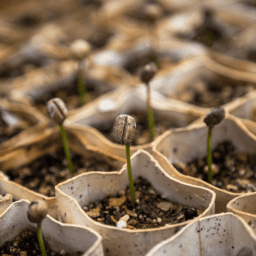
The use of coffee grounds in gardening has garnered significant attention for its myriad benefits, from enriching the soil to deterring pests. Among the various plants that thrive with the addition of coffee grounds, green beans stand out for their particular affinity towards this natural soil amendment.
Green beans, a staple in many gardens, require soil rich in nutrients for optimal growth. This article delves into the benefits of coffee grounds for green beans, exploring how this common kitchen waste can turn into a valuable resource for gardeners.
The Benefits of Coffee Grounds for Green Beans
Nutrient-Rich Amendment
Coffee grounds are celebrated for their high nitrogen content, alongside other essential nutrients such as potassium and phosphorus. These elements are crucial for the healthy growth of green beans, contributing to their development and productivity.
Improved Soil Health
Integrating coffee grounds into the soil benefits green beans by enhancing soil structure and moisture retention. As noted by Bob Vila and All About Gardening, coffee grounds can improve the soil’s ability to retain water, a vital aspect for green beans that thrive in well-draining yet moisture-retentive soil.
Furthermore, the addition of coffee grounds encourages the presence of earthworms, which are beneficial for aerating the soil and further improving its structure and nutrient availability.
Pest Deterrent
Another notable advantage of using coffee grounds in the garden is their natural pest deterrent properties. Coffee grounds can effectively repel slugs, snails, and other common garden pests, protecting green beans from potential damage. The strong aroma and the texture of coffee grounds create an unfavorable environment for these pests, offering an eco-friendly solution to gardeners seeking to minimize the use of chemical pesticides.
How to Use Coffee Grounds Correctly
Application Methods
Incorporating coffee grounds into your garden to benefit green beans can be done in two primary ways: direct soil amendment and composting. Direct application involves mixing coffee grounds directly into the soil around your plants. This method can instantly boost the nutrient levels in the soil, making them readily available to your green bean plants.
However, composting coffee grounds before using them as soil amendment allows for a slower release of nutrients, which can be beneficial for long-term soil health and plant growth. Both Bob Vila and GrowVeg advocate for these methods, highlighting the importance of choosing the right approach based on your gardening needs.
When it comes to the ideal ratios and frequency of application, moderation is key. A cup of coffee grounds per week is often sufficient for most garden setups, as recommended by Webgardener and Caffe! Excessive amounts can lead to nutrient imbalances, particularly in nitrogen, which might hinder plant development rather than fostering it.
Precautions to Consider
While coffee grounds can be highly beneficial for green beans, certain precautions should be taken to avoid potential pitfalls. One major consideration is the acidity level that coffee grounds can introduce to the soil. Although green beans can tolerate slightly acidic soil, excessive acidity can be detrimental. It’s crucial to monitor the soil’s pH level and adjust the use of coffee grounds accordingly, ensuring that the soil environment remains conducive to green bean growth (All About Gardening, Caffe!).
Moreover, the state of the coffee grounds when applied is significant. Dried, not fresh, coffee grounds are recommended for garden use. Fresh grounds may have higher acidity levels and can harm plants if not composted first. Allowing coffee grounds to dry out and neutralize before application can mitigate these risks, making them safer for green beans and other garden plants (All About Gardening).
FAQs
Can coffee grounds be used for all types of beans?
While coffee grounds can benefit green beans significantly due to their nutrient content and pest deterrent properties, not all bean varieties may respond the same way. It’s essential to consider the specific needs and soil preferences of each bean type before applying coffee grounds.
How often should coffee grounds be applied to green beans?
A general guideline is to apply a cup of used coffee grounds to the soil around green beans once a week. However, this can vary depending on the soil condition and the growth stage of the plants. Observing the plants’ response to the application can help determine the optimal frequency.
Are there any plants that should not be given coffee grounds?
Yes, not all plants are suitable for coffee ground application. Plants that prefer alkaline soil conditions may not thrive with the addition of coffee grounds, which tend to be acidic. Examples include plants that suffer in overly moist soil conditions or those that require a dry soil environment, as coffee grounds can enhance soil moisture retention.
Conclusion
In conclusion, coffee grounds offer a range of benefits for green beans, from providing essential nutrients to improving soil health and deterring pests. Their application, whether directly to the soil or through compost, can significantly enhance green bean growth and yield. However, it’s crucial to apply them correctly, observing recommended ratios and frequencies, to avoid potential issues such as excessive soil acidity.
Gardeners are encouraged to embrace the use of coffee grounds in their green bean cultivation as part of sustainable gardening practices. Experimentation with coffee grounds, while keeping in mind the precautions discussed, can lead to a more productive and environmentally friendly garden. The versatility and benefits of coffee grounds underscore the importance of resourcefulness and sustainability in gardening endeavors, offering a win-win solution for both gardeners and the environment.









